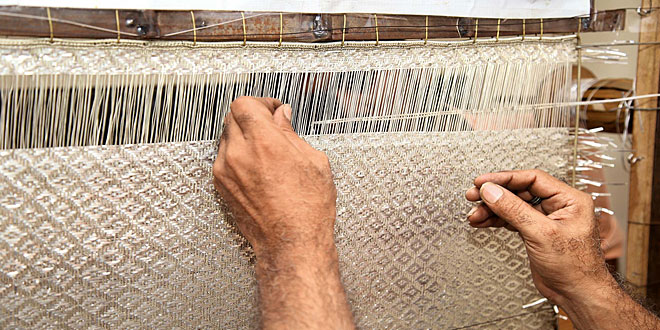Question: How did craft towns come into existence?
Answer: Specialized crafts were concentrated at different places. Kings and nobles required luxury goods. This led to the growth of craft towns. For example, Bidar was famous for its beautiful ‘Bidri’ work. Hyderabad, the capital of kingdom of Golconda, was a gem cutting and trading center for jewels. Murshidabad was a prominent center for different kinds of silk fabrics.
Question: How did commercial and trading towns develop? What were the two types of commercial and trading towns?
Answer: A commercial town developed as a result of the products found in that region or because of its nearness to ports or major trade routes. Commercial and trading towns were of two types-inland trading towns and port towns.
Ahmedabad and Kasimbazaar were famous for cotton and silk textiles. Kabul was famous center of horse trade. Hampi, Masulipatnam and Surat were some other towns involved in commercial activities.
Question: Who were the banjaras?
Answer: The banjaras were a trading group. They travelled from one place to another, buying goods and selling them. They also organised the transport of goods to other places.
Question: How did temple towns come up? Explain with examples.
Answer: Temple were central to the economy and society of a particularly region as they performed a large number of function. To cater to the needs of the temples and the pilgrims, people different professions settled there. There were priests, garland makers, weavers, sculptors, shopkeepers, traders, musicians, dancers, and many more. A classic example is Tanjore (now Thanjavur). It was capital of the Cholas but was more famous for its temples. Tanjore developed into flourishing town largely because of its temples. Tirupati, Somnath, Kanchipuram, Madurai and Mathura were some other famous temple towns.
Question: Write short notes on – Pilgrimage towns, Surat.
Answer: Pilgrimage Towns:
Pilgrimage centres slowly turns into towns. Benaras (now Varanasi), Allahabad, Mathura and Vrindavan are examples of such towns. The dargahs of famous Sufi saints such as Khwaja Muin-ud-din Chishti at Ajmer and Khwaja Hazrat Nizam-ud-din Auliya at Delhi attracted a large number of devotees. Many of them settled there.
Surat:
- Surat, in Gujarat, is situated on the bank of River Tapti. It was an important port and trading town during the medieval period.
- Surat was a commercial town. According to Duarte Barbosa, ships from many countries docked at Surat.
- During the reign of the Mughals, Surat became a very important commercial city, famous for all types of textiles, particularly cotton textiles. Fine cotton with ‘Zari’ borders were produced by the craftsmen. These were exported to the markets in West Asia and Europe.
- The English set up a trading post in Surat in 1612. They were followed by the Dutch and the French
- The location of Surat also helped it to prosper. Ships carrying Haj pilgrims to Mecca set sail from here.
- Realizing its importance, the Portuguese merchants tried to control trade in Surat.
- Surat enjoyed great prosperity between the sixteenth and eighteenth centuries. Shivaji plundered it twice, in 1664 and 1670.
- With the decline of the Mughal Empire and the rise of Bombay (now Mumbai) as a major port and administrative centre, Surat declined in importance. Today Surat is a major centre of diamond trade.
Question: In what ways was craft production in cities like Calcutta different from that in cities like Thanjavur?
Answer: Craft production in cities like Calcutta different from that in cities like Thanjavur:
- Crafts persons in Thanjavur were independent while in Calcutta they were in the hands of Europeans.
- In Thanjavur, crafts were developed on interest and they were creative and specialized while in Calcutta crafts persons began to work on a system of advances.
- They were having liberty to sell their own made crafts and textiles while here they no longer had the liberty of selling their own crafts.
- In Calcutta they had to reproduce the designs supplied to them by the Company agents.
- They now had to moved into the Black Towns established by the European companies within these new cities.
 Class Notes NCERT Solutions for CBSE Students
Class Notes NCERT Solutions for CBSE Students



I have a question – What does capital town means?
Good answer but I want answer of some other questions which I am not getting in my textbook
it is very good
What is the difference between pilgrimage towns and Temple towns?
Write a short note on these topic in points:
a) Vijayanagara Empire
b) Temple Towns
c) Ports centers
d) Administrative towns
e) Capital town